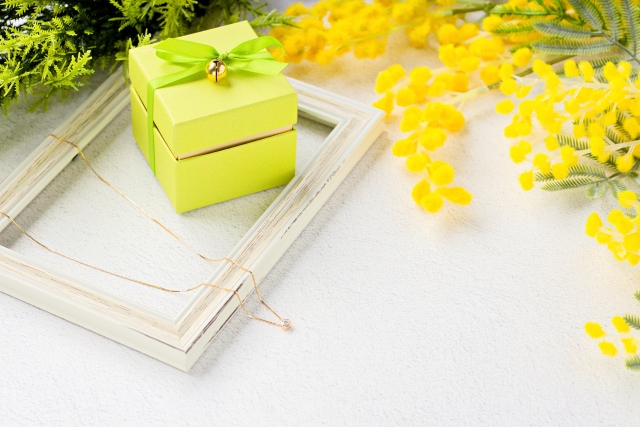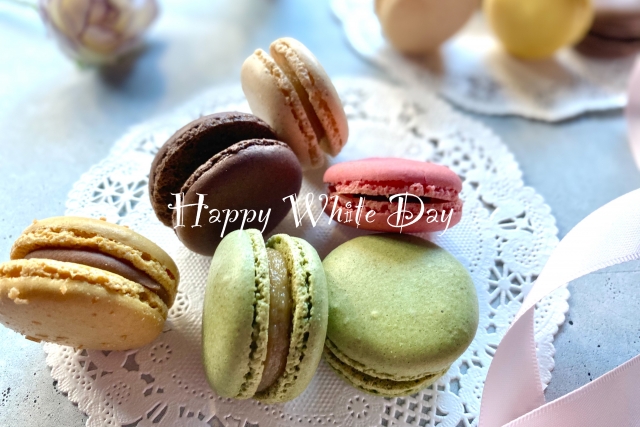
Unique Valentine’s Day in Japan
日本独特のバレンタインデー

Time flies so fast! February is just around the corner again. Speaking of February, Valentine’s Day. Today, I will talk about the differences in how to celebrate the Day between Japan and some other countries.
今年(ことし)も早(はや)いもので、もうすぐ2月(にがつ)になります。2月(にがつ)と言(い)えば、バレンタインデーですね。今日(きょう)はバレンタインデーについて日本(にほん)と他(ほか)の国(くに)との違(ちが)いをお話(はなし)します。
The History of Valentine’s Day in Japan
日本のバレンタインの歴史
In Japan, women typically give men chocolates on Valentine’s Day. But, when and why on earth did such a custom start?
日本(にほん)ではバレンタインデーに女性(じょせい)から男性(だんせい)へチョコレートを贈(おく)りますが、一体(いったい)いつから、なぜ、そういう習慣(しゅうかん)ができたのでしょうか?
In 1935, Morozoff, a confectionery and cake company, advertised in an English Newspaper, saying “why don’t you give chocolates to your loved ones on Valentine’s Day?” This is reportedly the start of Valentine’s Day in Japan. After that, in 1957 Marry Chocolate Company began a promotion for Valentine’s Chocolates, and the custom spread little by little till it became fully entrenched in Japanese society.
バレンタインにチョコレートを贈(おく)るようになったのは、1935年にモロゾフ製菓会社(せいかがいしゃ)が英字新聞(えいじしんぶん)に「愛(あい)する人にバレンタインにチョコを贈(おく)りましょう」という広告(こうこく)を出(だ)したのが始(はじ)まりと言われています。その後1957年には、メリーチョコレートカンパニーがバレンタインチョコのキャンペーンを始(はじ)め、徐々(じょじょ)に定着(ていちゃく)していったようです。

From Women to Men
女性から男性へ
Unlike foreign countries where couples send presents and flowers to each other on Valentine’s Day, its own culture for the romantic day is taking root in Japan. A single woman gives chocolates to a guy she admires, expressing her true feelings. These chocolates are called ‘Honmei’ or ‘True Feelings’ Also, women give men chocolates between couples. On the other hand, chocolates given to colleagues are called ‘Giri Choco’ or ‘Obligatory Choco’, serving as a lubricant to build better relationships. Even Mothers give some to their sons and girls to boys in the same class; it is not overstated that there are no other promotional campaigns that are more successful than this.
バレンタインデーに恋人(こいびと)たちや夫婦(ふうふ)がお互(たが)いに、プレゼントやお花(はな)を贈(おく)り合(あ)う多(おお)くの外国(がいこく)とは違(ちが)い、日本(にほん)には独自(どくじ)の文化(ぶんか)が根付(ねづ)いています。女性(じょせい)がバレンタインデーを機(き)に、好(す)きな男性(だんせい)にその気持(きも)ちを打(う)ち明(あ)ける(いわゆる告白(こくはく)をする)のです。こういうチョコレートを【本命(ほんめい)チョコ】と呼(よ)んでいます。カップルや夫婦間(ふうふかん)でも、女性(じょせい)から男性(だんせい)へチョコレートを贈(おく)ります。一方(いっぽう)、会社(かいしゃ)の同僚(どうりょう)に贈(おく)るチョコレートは【義理(ぎり)チョコ】と言(い)われ、関係性(かんけいせい)を良(よ)くする潤滑油(じゅんかつゆ)のような役割(やくわり)をします。お母(かあ)さんから男児(だんじ)へ、クラスメイトの女子が男子生徒(だんしせいと)へさえ贈(おく)るのですから、販売促進(はんばいそくしん)キャンペーンがこれ程(ほど)上手(うま)くいった例(れい)は他(ほか)にはないと言(い)っても過言(かごん)ではないでしょう。

White Day
ホワイトデー
We have White Day in Japan. It is on the 14th of March, a month after Valentine’s Day when men make a return for the chocolates they got. Of course to ‘true feeling’, but also to ‘obligatory choco’, men are supposed to give some candies or cookies equivalent in price to what they received in return.
日本にはホワイトデーという日が存在(そんざい)します。バレンタインデーから調度(ちょうど)1カ月後の3月14日です。この日は、チョコレートをもらった男性がチョコをくれた女性にお返(かえ)しをする日です。本命(ほんめい)チョコはもちろん、たとえ義理(ぎり)チョコであっても、キャンディーやクッキーなど、貰(もら)ったチョコに釣(つ)り合(あ)うくらいのお返(かえ)しは必要(ひつよう)です。
Valentine’s Day in the world
世界のバレンタインデー
It is said that Valentine’s Day originated in A.D 270. It was originally a pagan festival. Today, couples give a gift to each other in many countries. Confectionaries, jellies and flowers are typical presents. Alternatively, they have a romantic night out. Interestingly, there are a few countries where people do some unique things on Valentine’s Day. Here, I will introduce how people spend the day in the Philippines and Denmark.
世界(せかい)のバレンタインデーの起源(きげん)は、270年と言われています。異教徒のフェスティバルだったようです。現在、多くの国では、恋人・夫婦間でお菓子、ジュエリーやお花を交換したり、ロマンティックなお出かけをするのが定番のようです。ですが、日本のように独自のバレンタインデーの過ごし方をする国もあります。ここではフィリピンとデンマークの祝い方を紹介します。
In the Philippines, municipal governments and other organisations sponsor a mass wedding ceremony on Valentine’s Day. It is reported that there are a lot of unmarried couples who have lived together for a long time, some of whom already have children, but they can’t afford to have a wedding ceremony and hence have no marriage certificate, which is necessary for raising children.
フィリピンでは、地方自治体(ちほうじちたい)や他組織(たそしき)がスポンサーになって集団結婚式(しゅうだんけっこんしき)が執(と)り行(おこな)われるそうです。なんでも、長年(ながねん)付(つ)き合(あ)っていたり、一緒(いっしょ)に住(す)んでいるカップル、中(なか)には既(すで)に子供(こども)がいるカップルも経済的(けいざいてき)な理由(りゆう)から結婚式(けっこんしき)をしておらず、故(ゆえ)に結婚証明書(けっこんしょうめいしょ)などの重要書類(じゅうようしょるい)もない人達(ひとたち)を支援(しえん)するためだそうです。

In Denmark, a poem is sent on the day. A square paper is folded four times with shapes cut into the paper, such as hearts and diamonds. The unfolded paper should have beautiful patterns on it. A sender doesn’t write their name but gives a cue with dots indicating the sender. If a receiver can guess the sender right, the sender will give the receiver an Easter Egg about two months later.
デンマークでは、ポエムなどを書(か)いた手紙(てがみ)を送(おく)ります。紙(かみ)は四角(しかく)いものを使(つか)い四(よ)つ折(お)りにし、ハートやダイヤモンド型(がた)の切(き)り込(こ)みを入(い)れます。広(ひろ)げると、切(き)りこまれた綺麗(きれい)な模様(もよう)が出(で)てきます。差出人(さしだしにん)の名前(なまえ)は書(か)かずに、ドットで名前(なまえ)を示唆(しさ)します。受(う)け取(と)った人(ひと)が、送(おく)り主(ぬし)が誰(だれ)かを当(あ)てられれば、約(やく)2カ月後のイースターにイースターエッグをもらえるそうです。
It is very interesting to know how to spend Valentine’s Day and what to do on the day in various countries. In Japan, it’s also a fad that people buy chocolates as an award for themselves who have been working hard for Valentine’s Day when a variety of delicious-looking chocolates are all available in the market.
バレンタインデーの過(す)ごし方(かた)も国(くに)により違(ちが)いがあり面白(おもしろ)いですよね。最近(さいきん)日本では、誰(だれ)かにチョコレートをあげずに、たくさんの種類(しゅるい)のチョコが一度(いちど)に市場(しじょう)にでてくるのを利用(りよう)し、自分(じぶん)へのご褒美(ほうび)チョコを買(か)う人も増(ふ)えているそうです。